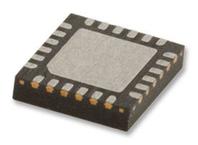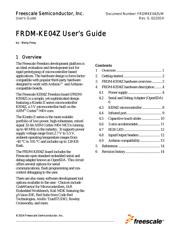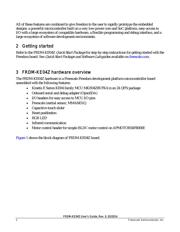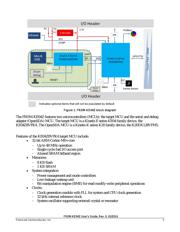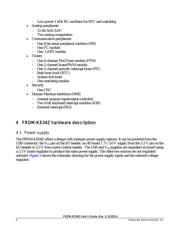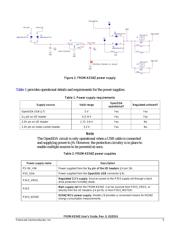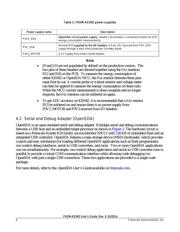herunterladen

Freescale Semiconductor, Inc. Document Number: FRDMKE04ZUM
User’s Guide Rev. 0, 02/2014
© 2014 Freescale Semiconductor, Inc.
___________________________________________________________________
FRDM-KE04Z User’s Guide
by: Wang Peng
1 Overview
The Freescale Freedom development platform is
an ideal evaluation and development tool for
rapid prototyping of microcontroller-based
applications. The hardware design is form-factor
compatible with popular third-party hardware
designed to work with Arduino™ and Arduino-
compatible boards.
The Freescale KE04Z Freedom board (FRDM-
KE04Z) is a simple, yet sophisticated design
featuring a Kinetis E series microcontroller
KE04Z, a 5 V microcontroller built on the
ARM
®
Cortex
®
-M0+ core.
The Kinetis E series is the most scalable
portfolio of low-power, high-robustness, mixed
signal 32-bit ARM Cortex-M0+ MCUs running
up to 48 MHz in the industry. It supports power
supply voltage range from 2.7 V to 5.5 V,
ambient operating temperature ranges from
-40 °C to 105 °C and includes up to 128 KB
flash.
The FRDM-KE04Z board includes the
Freescale open standard embedded serial and
debug adapter known as OpenSDA. This circuit
offers several options for serial
communications, flash programming and run-
control debugging to the user.
There are also many software development tool
options available to the user. Choices include
CodeWarrior for Microcontrollers, IAR
Embedded Workbench, Keil MDK featuring the
µVision IDE, Red Suite from Code Red
Technologies, Atollic TrueSTUDIO, Rowley
Crossworks, and more.
Contents
1 Overview ................................................... 1
2 Getting started............................................ 2
3 FRDM-KE04Z hardware overview ........... 2
4 FRDM-KE04Z hardware description ........ 4
4.1 Power supply ...................................... 4
4.2 Serial and Debug Adapter (OpenSDA)
6
4.3 KE04Z microcontroller ...................... 8
4.4 Infrared port........................................ 9
4.5 Capacitive touch slider ..................... 10
4.6 3-axis accelerometer ......................... 11
4.7 RGB LED ......................................... 12
4.8 Input/Output headers ........................ 12
4.9 Arduino compatibility ...................... 13
5 References ............................................... 14
6 Revision history ....................................... 14

